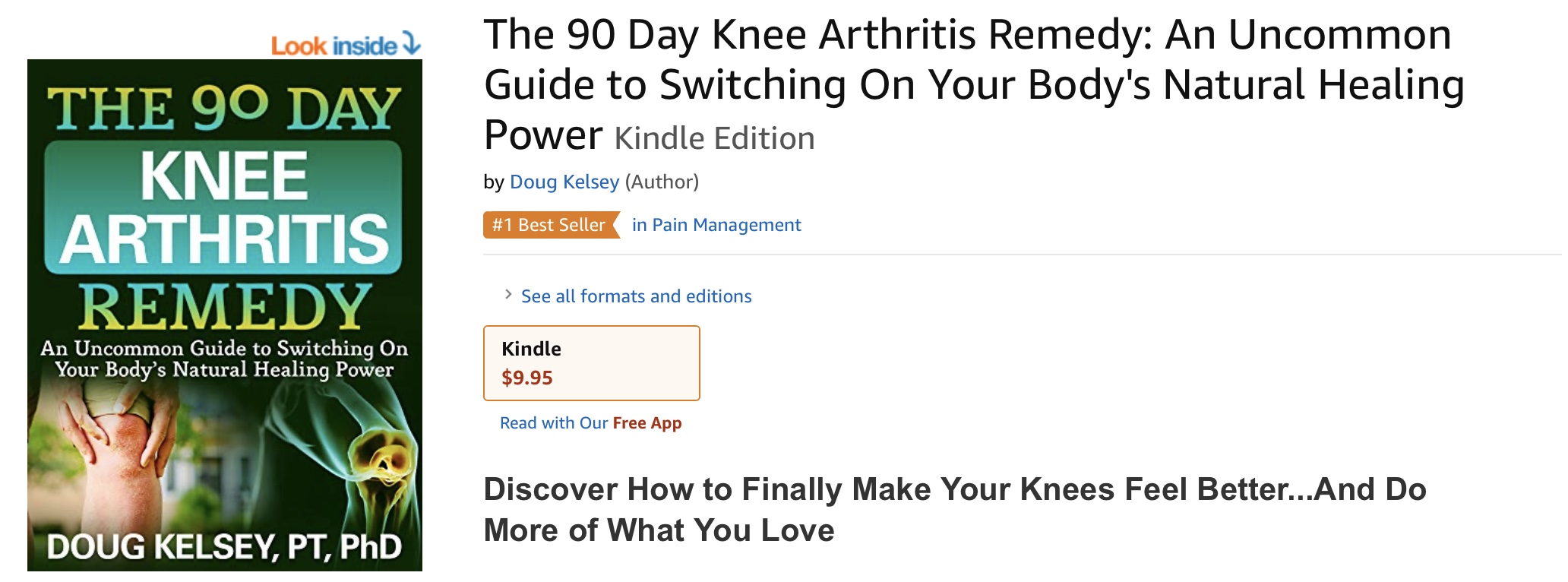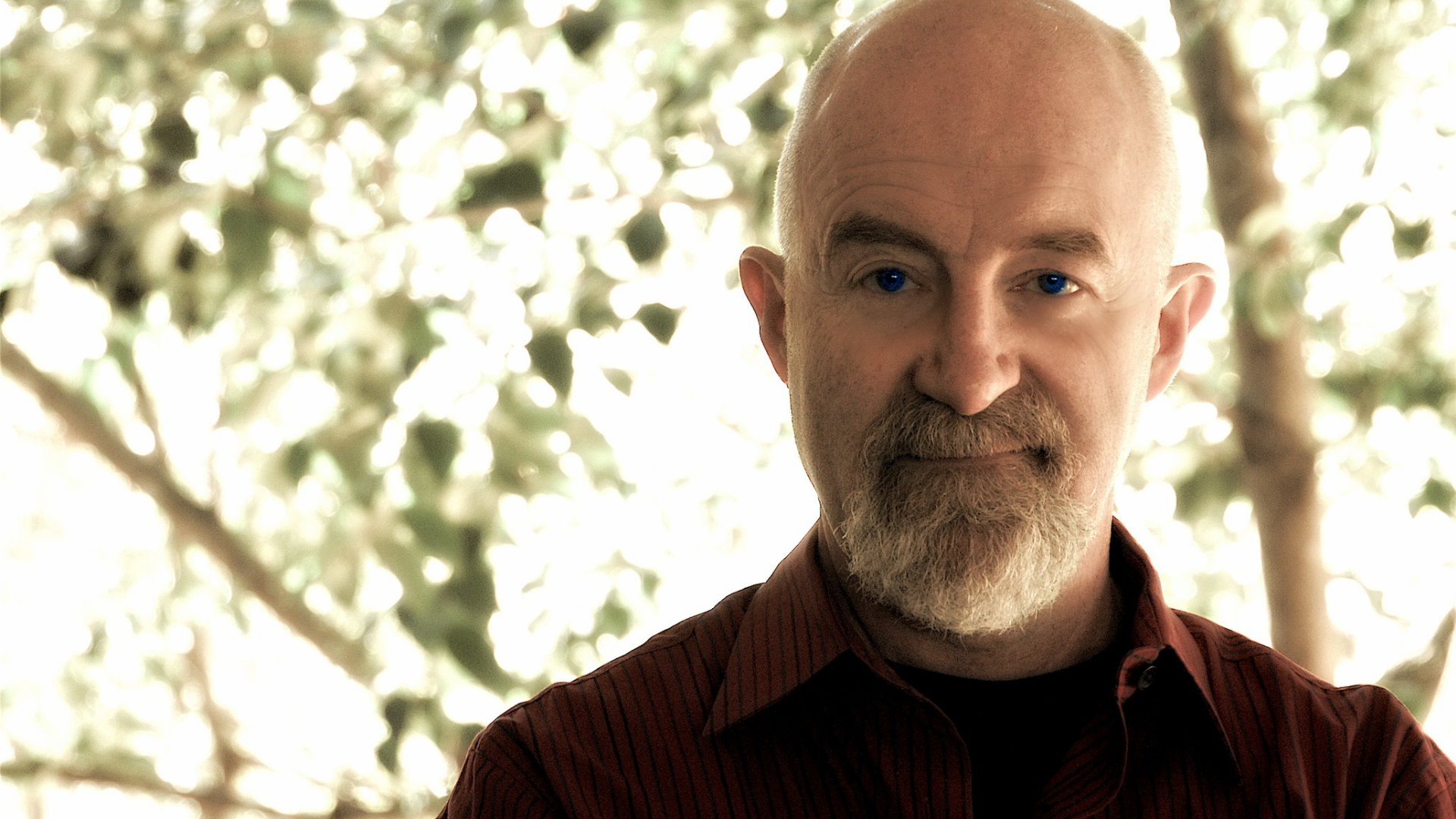How Do You Strengthen the Knee Joint?
There's no doubt that strong thigh muscles, the quadriceps, is protective against knee pain. People who develop knee arthritis all have weak quadriceps muscles. There's some debate about which comes first. Do the muscles grow weaker allowing arthritis to develop or does arthritis begin and, as a result, the muscles become weaker? Scientists don't know for sure but either way, knee pain from osteoarthritis and weak quadriceps muscles come together.
The ultimate goal is to develop strong leg muscles. And muscles need to be pushed, challenged. Muscles get stronger by a process known as progressive resistance exercise. The exercises must get harder and harder on a regular basis. Otherwise, the muscles won't respond. You won't get any stronger and your knee won't feel any better.
Conventional Wisdom says that there's nothing that can be done about the joint. You can't strengthen it so don't bother. This is why so many programs use a muscle first approach.
Strengthening Leg Muscles is Good but Not if it Hurts Your Knee
The good news is there's a way to boost the strength of your joint and leg muscles without making your knee feel bad.
The concept supporting this idea is based on the science of mechanobiology - how graduated pressure can be used to strengthen your tissues and joints..
Although many in the medical word believe you can't do anything about a weak or injured joint, I debunk this thinking in my book in detail. It's not just my opinion. It's from a large number of scientific studies that support the idea that joints respond to mechanical force but it's how the force is applied and used that makes the difference.
Nudge Joints and Push Muscles
In a nutshell, achy, stiff, sore joints need to be nudged to to get stronger, not pushed. You push muscles. You stress muscles hard and they respond quickly. Joints, you nudge carefully, persistently. And the result is that at a certain point, you can start pushing the muscles because the joint can take it.
You work from the inside - out. Using specific exercises that target the joint tissues and with the right resistance, repetitions, duration, frequency, you nourish the joint, boost the lubricating fluid in the joint, and build the tissue strength.
What's Happening in the Knee
Osteoarthritis (OA) is the most common form of arthritis affecting over 30 million Americans.
The condition results from a weakening and deterioration of the articular cartilage between the bones of the joint (Chondromalacia Patella and Patellofemoral Pain Syndrome are also conditions in which the articular cartilage is weak or injured).
Articular cartilage is a tough, rubbery and slick substance that covers the end your bones. Its job is to provide a nearly friction free environment while also protecting the bones from excessive force (more about cartilage in a later chapter).
The primary symptoms of OA are pain, aching, stiffness, swelling and weakness. These symptoms often interfere or prevent weight bearing activities--walking, squatting, certain kinds of exercise for example.
Many practitioners believe you're doomed. There's nothing you can do to help yourself feel better, move better.
Why? Because cartilage doesn't have a blood supply so they assume the tissue can't be changed.
But science has proven this belief to be wrong.
"….human cartilage responds to physiologic loading in a way similar to that exhibited by muscle and bone, and that previously established positive symptomatic effects of exercise in patients with OA may occur in parallel or even be caused by improved cartilage properties." - Roos EM, Dahlberg L. Positive effects of moderate exercise on glycosaminoglycan content in knee cartilage: a four-month, randomized, controlled trial in patients at risk of osteoarthritis. Arthritis Rheum. 2005 Nov;52(11):3507-14. PubMed PMID: 16258919.
Cartilage cells only talk to each other through what is known as the extra-cellular matrix. This matrix is a complex mixture of proteins and sugars that act like a three-dimensional spider web. The matrix is responsible for making cartilage stiff by attracting and binding water. The pressure from physical loading and unloading (for example, standing up, placing weight on your foot and then removing the weight) exerted on and within the matrix is transferred to the cartilage cells.
The pressure applied to the joint and the cartilage serves as the communication highway for cartilage cells.
This is how cartilage cells know what to do. If the loading pressure is too great, the matrix begins to come apart, water escapes, the internal pressure drops, and the cartilage cells have little stimulation.
What People Are Saying
"It was a life saver..."
I am 74 years old and play squash twice a week. About three years ago I tore the meniscus in my left knee. It gave me moderate but bearable pain and I kept playing. I didn’t know it was a torn meniscus for a year until I had an MRI (X-rays did not show anything). Since then I have been to two surgeons who both took more X-rays and told me the pain was just from arthritis. None recommended surgery. After the first surgeon, and about a year ago, I got your book the 90 day Knee Arthritis Remedy. Thank you. It was a life saver. I followed the program fairly diligently (and am continuing it but not as vigorously) and my left knee has been much better. My right knee, which had been starting to give me minor pain at squash before the left knee problem, is now perfect in my view.**
**Disclaimer: Individual result and does not guarantee success
Brock McLearon
Independent Review
For the lay person with knee pain, this book is a fantastic guide to aid understanding the nature of the problem, and what to do about it. This isn’t a science textbook, and it isn’t bloated with jargon, or incomprehensible instructions. It is a book for everyone who deals with painful knees. Many helpful illustrations and links to online videos are available to enhance understanding. This book is a user-friendly guide to some of the best advice, for bad knees, you will find anywhere.
**Disclaimer: Individual result and does not guarantee success
- Dr. Mark White, PT, DPT, OCS
Fully Recovered
I am happy to report that I have fully recovered from CRPS (Chronic Regional Pain Syndrome) and patellofemoral pain, my knees are strong again and I am back to cycling 5-6 days a week and some light running. I still incorporate many of the exercises in my core strength routine and my load tolerance allows me to do 1 legged squats no problem. I even do pylometrics with jump squats occasionally.
Doug, your Ebook is tremendous and the principles of rehab have given me everything I need to keep my knees healthy. I now know exactly what to do when I push it a little too much.
Thanks for making your book available to everyone. I have recommended it to many of my friends with patellofemoral pain.
Gratefully,
Leslie Wicholas, MD**
**Disclaimer: Individual result and does not guarantee success
-Leslie Wicholas, MD
The Answer is to Strengthen the Joint First
A muscle-first approach works best for a muscle based problem. If you have shoulder pain from a weak rotator cuff, strengthening the rotator cuff muscles makes good sense.
But, if you have a joint problem, a joint-first approach makes more sense than a muscle first approach.
What you will learn from The 90 Day Knee Arthritis Remedy is how to boost the strength of your knee joint and how to strength all the muscles of your leg and trunk...but that's not all.
You'll learn the principles a joint-first approach and how to strengthen the joint in any of the purchase options. The multi-media ebook goes into great detail with more specific examples, exercises, videos, and special programming.
What you will learn from The 90 Day Knee Arthritis Remedy is how to boost the strength of your knee joint and how to strength all the muscles of your leg and trunk...but that's not all.
Strengthen Your Muscles and Your Joint
THE 90 DAY KNEE ARTHRITIS REMEDY
What You'll Learn
The 90 Day Knee Arthritis Remedy is an e-book - no physical product will be shipped. The book comes in Kindle format.
- The main reason your knee hurts
- Why trying to strengthen your quadriceps almost always fails
- Five reasons you should avoid Non-Steroidal Anti-Inflammatory Drugs for pain relief
- A simple home exercises to reduce pain and improve mobility
- Why your knee pain is "not just wear and tear"
- The role of leg strength in knee pain
- Whether to use heat or cold
- The unique requirements that help injured cartilage heal
- How to strengthen a joint and why traditional strength training fails
- Why rest can help and hurt you
- Why flat feet don't cause knee pain
- Seven options to reduce knee pain naturally
- What supplements to use to help strengthen your joint
- How to test your leg strength without causing knee pain
- Special core strength and endurance tests
- A joint strengthening exercise routine with video demonstration of the exercises
- Exercises to improve balance and core strength
- Six reasons you fail to make progress
- Photos and videos to help you understand the presented exercises (embedded within the text of the book)
- And much more!

Doug Kelsey, PT, PhD
About the Author
Doug Kelsey (“DK”) is a physical therapist, author and teacher whose specialty is helping people build resilience - fitness across multiple domains - to enhance their performance, health, and life (professional CV here).
- Founder of Sports Center the largest, independent physical therapy practice in Austin,TX.
- Performance coach and physical therapist for over thirty years.
- Conducted more than 20,000 consultations and 100,000 training sessions with people from all walks of life (Olympic athletes, to weekend warriors to moms and dads and their kids).
- Former Associate Professor and Assistant Dean for Clinical Affairs, University of Oklahoma Health Sciences Center.
- Presented independent research nationally and internationally.
- Owner of two patents on anti-gravity exercise devices (here and here)
- Author of hundreds of articles and several published books.
- Conducted over 250 national and international seminars for trainers, therapists, and clinicians
Sample Chapters
- SAMPLE CHAPTER A
- SAMPLE CHAPTER B
You can read samples of The 90 Day Knee Arthritis Remedy by clicking on the tabs labeled SAMPLE CHAPTER A and SAMPLE CHAPTER B.


